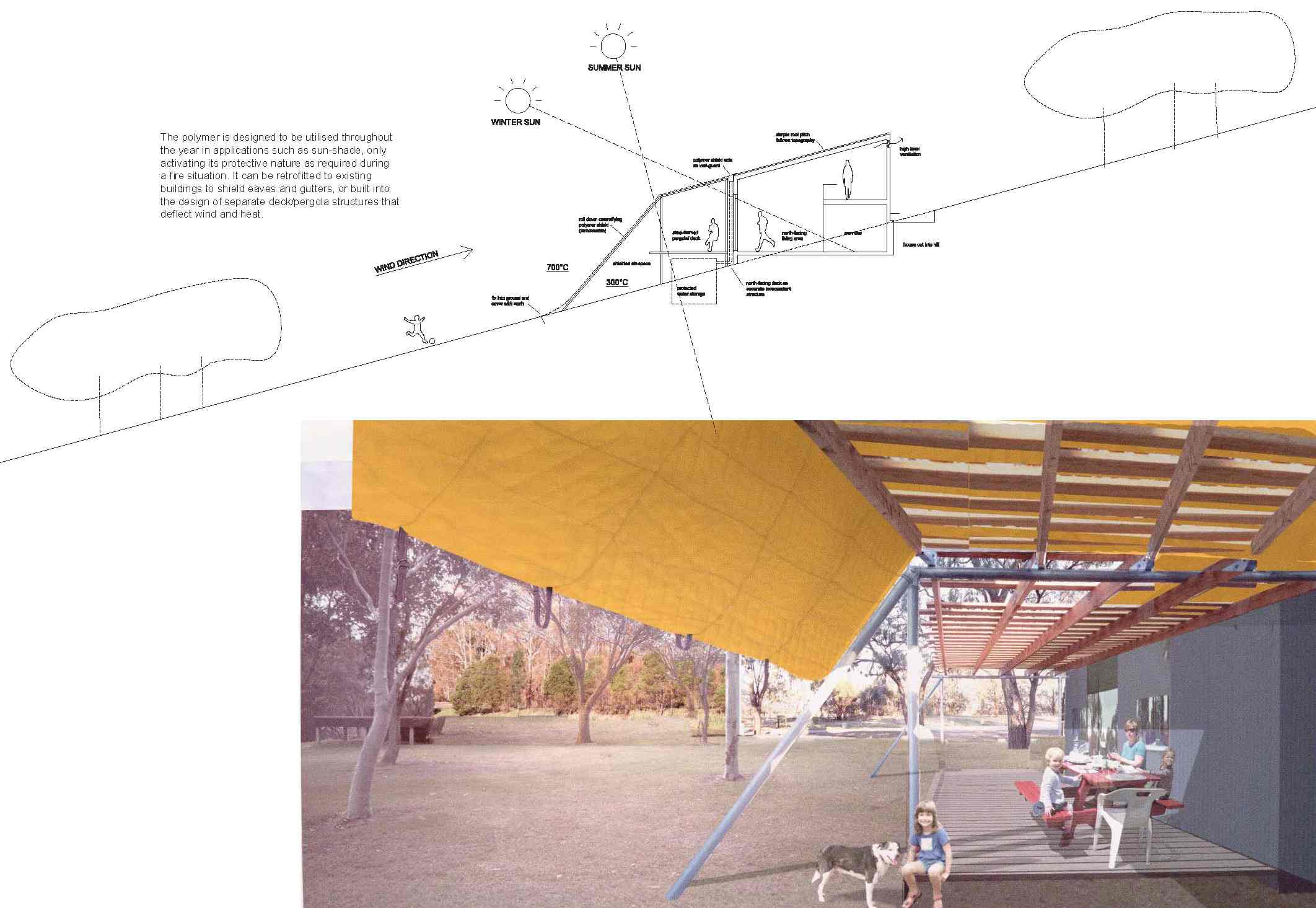2009 Design Challenge: Fire Winners Polytactics
November 10, 2009
Tags Firoz AlamJordi Beneyto-FerreLaura HarperNigel BertramProf. David MainwaringProf. Robert ShanksProf. SueAnne WareVictoria Smith
Team members: Firoz Alam, Jordi Beneyto-Ferre, Nigel Bertram (RMIT Architecture), Laura Harper(RMIT Architecture Alumni), Professor David Mainwaring (RMIT Applied Chemistry), Professor Robert Shanks, Victoria Smith and Associate Professor SueAnne Ware (RMIT Landscape Architecture)
Research question
What alternative strategies and tactics can designers employ at both domestic and infrastructural scales to reconsider fire diversion and site rehabilitation?
Summary
This project provides a strategic approach to:
* Increasing the amount of time available during fire events for evacuation
* Diverting fire components away from housing and road infrastructure
* Demarcating safe, visible passageways during fire events
* Ensuring post-fire site rehabilitation
In essence, the project re-purposes and reconsiders existing light weight polymer materials that are activated by fire-events. The polymers may be cast into screens, road barricades, and construction fencing which when heated during a fire event will transform into a protective porcelain membrane. The objects will then provide a diversion of fire components (embers, wind gusts, radiation) and augment the amount of time for evacuation as well as create way-finding devices in heavy smoke cover. After the fire, the material can be crushed to degrade into the soil where it can assist in rehabilitation by containing nutrients, wetting agents or even seeds. As such they can actively help to protect homes, communities, and infrastructure, and rehabilitate the immediate environment.
Exhibition Pamphlet: http://issuu.com/rmitarchitecture/docs/polytactics/1?e=0

